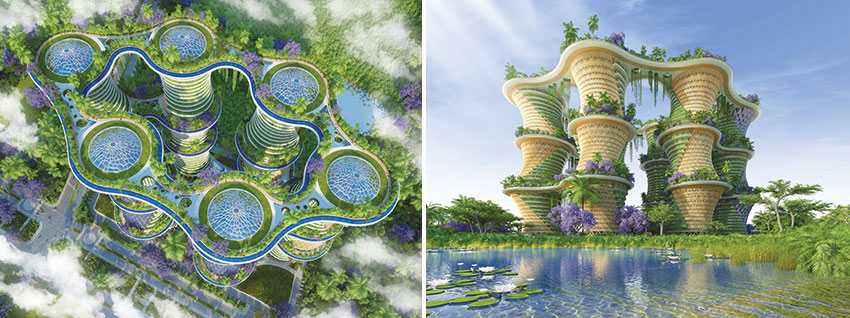
Conceived with the double objective of energy decentralization and food deindustrialization, this garden towers project is very holistic, combining the best of low-tech and high-tech instead of systematically opposing them. The designers aim is to reconcile urban renaturation and small-scale farming with environment protection and biodiversity.
The Hyperions, named after the tallest tree in the world 'the hyperion' - a sequoia semperviren found in northern California (whose size can reach 115.55 metres,close to 380 feet), comprises six 36-story connected towers built from cross-laminated timber, providing the best environmental footprint during its life cycle—from harvesting to recycling, through transportation, processing, implementation, maintenance, and reuse.
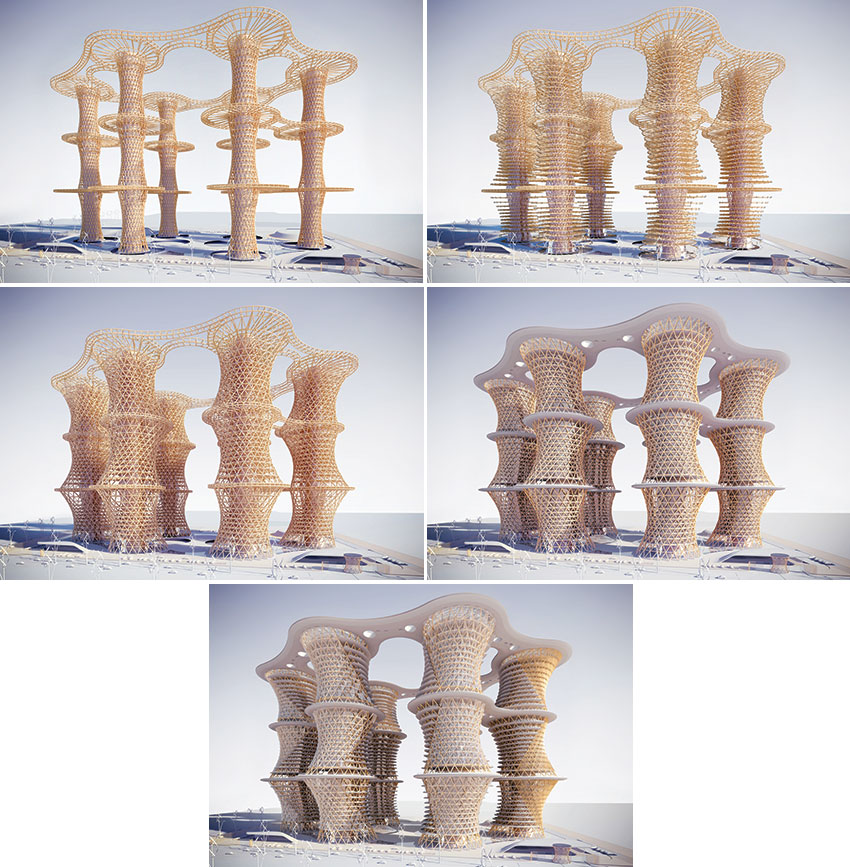
All the wood required to build the garden towers sourced from a Delhi forest, which is also managed sustainably, and in which they make sure to renew what they collect with respect for the appropriate cutting cycle and regenerating capacity. With its 68 million hectares of forest covering 23% of its territory, India is one of the ten most wooded countries on Earth, and the world's second producer of fruits and vegetables. Trapped as the citizens are in the New Delhi smog, their duty is to preserve those carbon-sequestrating forests now more than ever. Indeed, one cubic meter (c. 35 cubic feet) of wood can stock up to 0.9 ton of CO2 while a tree grows.
Amlankusum says, ''That's why I wanted our architects to celebrate this green treasure by building tall structures with wood, because it's the material that provides the best environmental footprint during its lifecycle -- from harvesting to recycling, through transportation, processing, implementation, maintenance, and reuse."
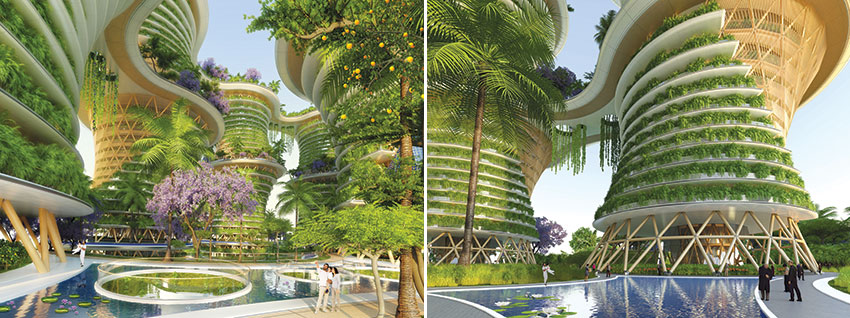
In order to optimize the residential buildings, architect opted for a mixed structure, with a steel and concrete substructure for the earthquake-resistant foundations, parking areas and vertical core bases; and a superstructure made of solid wood columns, beams and walls, reinforced with steel blades where columns and beams meet. Each wood-based structural component is made of multiple panels laid perpendicularly to each other, and bound together with pintles and gudgeonsor organic structural adhesives. The Hyperions' skeleton is made of 25% inert materials and 75% bio-sourced materials. This mixed structure is reputed for its strong mechanical resistance (including in the event of earthquakes); for its high resistance to fire; and for its high acoustic and thermal performance.
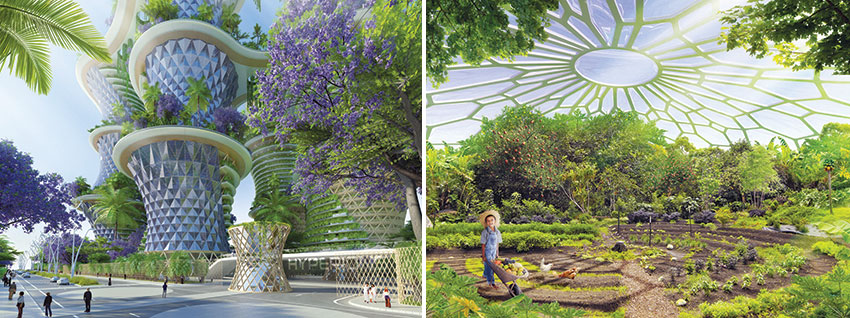
A Plus-Energy Project that Optimizes Its Environmental Footprint
The six garden towers are like a vertical village with a high social, cultural, and use mix. The flexible, evolutionary spaces dedicated to business incubators, living labs, coworking spaces, multi-purpose rooms and concierge services are located behind the solar facades. All apartments big or small, as well as student housing, open onto cascading hydroponic balconies. Indoor furniture is made of natural materials such as tamarind and sandalwood, and comes from local cabinetmakers, fab labs and recycling shops.
The various spatial uses are linked together with footbridges, and converge under a large orchard roof that serves as a meeting place for our small urban farmer community. Whether it's summer, monsoon or winter, families can meet there, pick fruit, go for a run, get some exercise in the sports hall's kabaddi field, swim in the organic pool, or watch over their kids playing kho kho in the playgrounds. These communal footbridges are irrigated by collecting rainwater and residents' greywater, and the filtered water's organic nutriments are absorbed by the plants' roots. This network of sky-high suspended walkways allows residents to move from one tower to the other, from one use to another, and to forge social and interdependent relationships among neighbors.
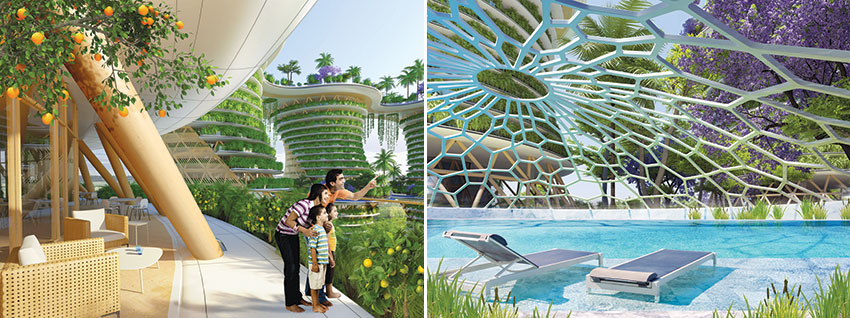
From Rajasthan, Jaypee inherits high temperatures and droughts, while freezing currents from the Himalaya can sometimes bring harsh winters. In order to secure the natural ventilation of the living spaces in this mostly hot and humid subtropical climate, architect put together a natural climate control system, articulated along the vertical circulation cores of the wind chimneys. This system takes advantage of the earth's thermal inertia (under the foundations), which remains stable at 18 degrees Celsius (c. 64 degrees Fahrenheit) all year round. Through natural airflow, the external air -- which can reach 45 degrees Celsius (113 degrees Fahrenheit) and fall to 3 degrees Celsius (c. 37 degrees Fahrenheit) in the winter is therefore naturally cooled or heated in contact with the earth, and so without using a single kilowatt of electricity.
Top down and bottom up: When collaborative city rhymes with local resources and supply chains
The fusion "forest + agriculture + urban fabric" is a humanistic alternative that brings together the best of both the city and the countryside. From agroforestry to wood-based construction to permaculture and aquaponics, the Hyperions project is the symbol of a short supply chain economy based on harvesting local resources. This virtuous circle generates links between local producers and "prosumers". Residents, organic farmers, garden producers, agroecologists, loggers, agronomists, architects, and designers: all participate in a sustainable production, distribution, consumption, and recycling process.
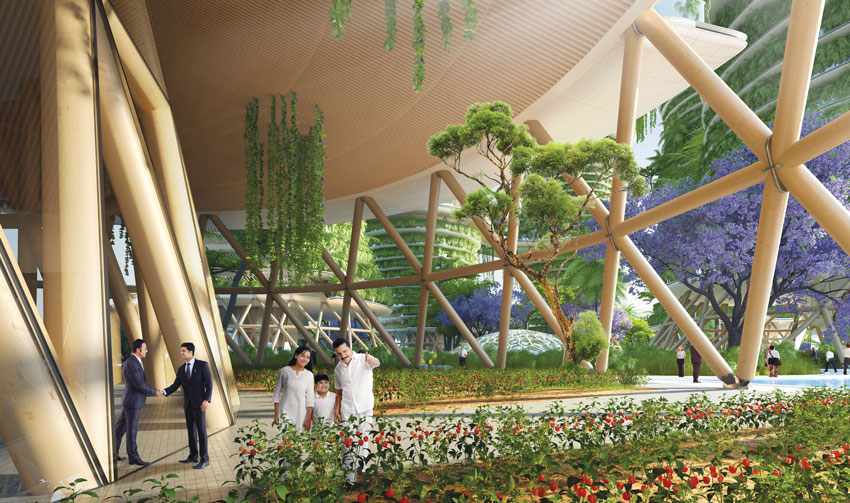
Using this circular, collaborative economic model, the designers have not only been able to reinforce the economic fabric by creating local jobs, but also to turn the project into a formidable sharing economy and co-construction playing field. Between the democratized technological innovations and the bottom-up social innovations, they've regained control of energy, resources, and space.
Amlankusum says, "We, the Urban Farmers, claim that converting worldwide agriculture into organic techniques and bio-sourced construction could reduce worldwide CO2 emissions by about 40% by 2030. Hyperions is a sustainable agro-ecosystem project capable of resisting climate change; thanks to its healthy economic and environmental ecosystems."
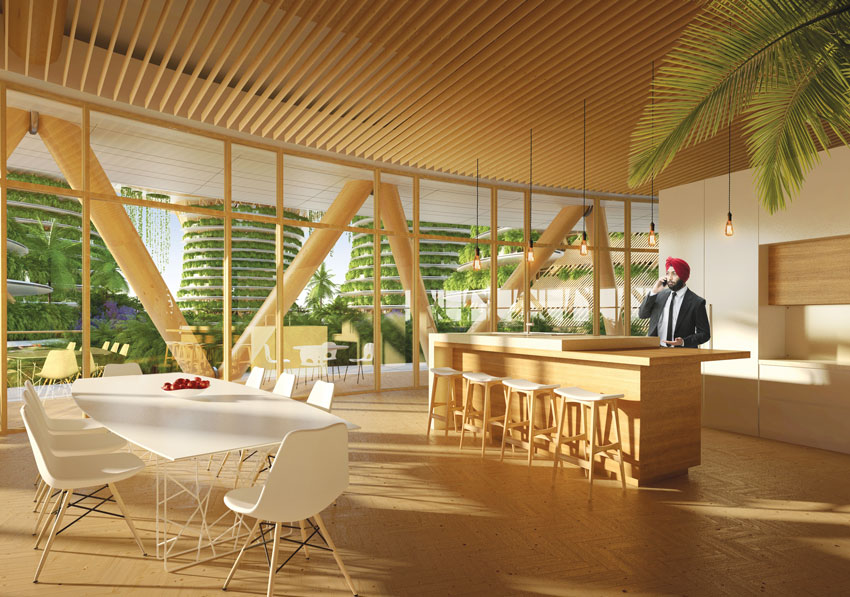
Indeed an exciting vision of future architecture, the project which is aimed to create a cultural hub that combines urban greening, small scale farming, environmental protection, and biodiversity, is estimated to be completed by 2020, bringing together the best of both the city and the countryside!















